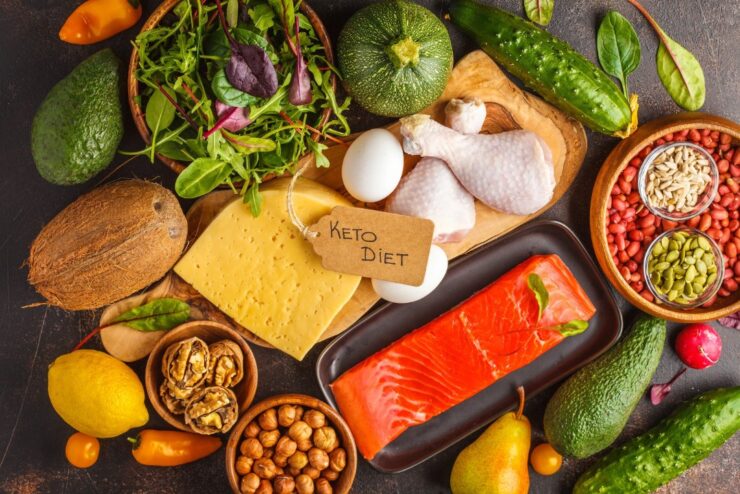What happens when two powerful metabolic strategies team up? You get a duo that could shift the way your body burns fuel, manages energy, and regulates weight. On their own, the keto diet and intermittent fasting each have serious benefits. But when combined? That’s when things start to get interesting.
First, a Quick Refresher
Keto is a low-carb, high-fat way of eating. The goal is to shift your body into ketosis, where it uses fat, rather than carbs, as its main energy source. That means fewer insulin spikes, better blood sugar control, and for many people, weight loss.
Fasting, particularly intermittent fasting, focuses on when you eat, not necessarily what you eat. It’s about creating eating windows and giving your body breaks from constant digestion. Popular approaches include the 16:8 method (16 hours of fasting, 8 hours of eating) or alternate-day fasting.
Individually, they both trigger metabolic benefits. Together, they create a kind of feedback loop that can enhance fat burning, energy levels, and even mental clarity.
Why Keto and Fasting Work So Well Together

When you start fasting, your body begins to burn through stored glycogen (from carbs). Once those stores are used up, it switches to fat for energy. That’s the same thing keto encourages. So when you’re already low on carbs thanks to keto, the transition into fat burning during a fast happens faster and with less discomfort.
Here’s where it gets really interesting:
- Less hunger during fasts – Keto tends to stabilize blood sugar and insulin, which means fewer energy crashes and less intense hunger. That makes it easier to go longer without eating.
- Faster fat adaptation – Fasting accelerates the rate at which your body adapts to utilizing fat as its primary fuel source. That’s helpful during the first few weeks of keto, when energy can dip.
- Boosted ketone production – Both fasting and keto increase ketones in the bloodstream. Ketones are like a clean-burning fuel that powers the brain and muscles more efficiently than glucose.
- Improved insulin sensitivity – These approaches both lower insulin levels, giving cells a break and potentially reducing the risk of insulin resistance over time.
- Streamlined lifestyle – With fewer meals and simpler food choices, the combination often results in less time spent planning and preparing meals.
If you want to delve deeper into how keto and fasting affect metabolism, there is a wealth of helpful information available at https://www.drberg.com/. Dr. Berg breaks down the science in a way that’s easy to understand without getting overwhelming.
What Does a Keto + Fasting Day Look Like?

Let’s say you follow a 16:8 intermittent fasting pattern. That means you’d fast for 16 hours, then eat during an 8-hour window—often something like 12 pm to 8 pm.
During your eating window, you’d focus on high-fat, moderate-protein, low-carb meals. Think eggs, avocados, leafy greens, fatty fish, and olive oil.
You don’t need to eat nonstop during your window. Most people have two meals, maybe with a small snack in between if needed. The key is to avoid spiking insulin with sugary foods or simple carbs. Keep things nutrient-dense and satisfying.
During the fast, water, black coffee, tea, and electrolytes are your friends. No creamers, no snacks, no “just a bite” of anything. Allow your body to remain in a fasting state to reap the maximum benefits.
Common Challenges (and How to Handle Them)
No surprise here: changing how you eat and when you eat can bring a few bumps along the way. Here’s what you might notice and what to do about it.
Low Energy in the Beginning
When you’re switching to fat-burning mode, your body might take a little time to catch up. Support yourself with hydration, electrolytes (especially sodium and potassium), and plenty of rest during the first week or two.
Hunger During Fasting
It often passes after the first few days, but in the meantime, check that you’re eating enough fat during your meals. You shouldn’t be white-knuckling your way through fasts. If you are, tweak your fat intake.
Social Pressure
Let’s be honest—people might not get it. That’s okay. You don’t need to explain yourself to everyone. Eat in a way that works for your goals and your body. You can always adjust your eating window to accommodate special events or outings.
Who Might Benefit Most From Combining Keto and Fasting?

This combo isn’t one-size-fits-all, but there are a few groups that tend to see the biggest impact:
- People with insulin resistance or prediabetes – Lowering insulin and giving the body time to rest from constant eating can help with blood sugar regulation.
- Those looking for weight loss without constant restriction – Eating nutrient-dense, satisfying meals and taking breaks from snacking helps naturally reduce calorie intake without counting every bite.
- Anyone dealing with energy crashes – Fewer blood sugar swings means steadier energy throughout the day.
- People who want mental clarity – Ketones have a neuroprotective effect and often sharpen focus and mood.
That said, this isn’t a cure-all or a prescription. Anyone with medical conditions or taking medications, especially those related to blood sugar, should consult a healthcare professional before making significant changes.
Can You Do One Without the Other?
Absolutely. Plenty of people follow keto without fasting or fast without going low-carb. Both approaches have their own benefits.
However, if you’re looking for increased efficiency in your metabolism, better energy regulation, or a more streamlined routine, pairing the two might be worth trying. It often feels easier to fast when you’re not riding the blood sugar rollercoaster that comes with high-carb meals. And when you’re fasting regularly, staying in ketosis gets even easier.

Final Thoughts ─ It’s About Giving Your Body Space to Work Smarter
Most of us are constantly eating: snacks between meals, sugary drinks, and late-night bites. Our bodies never really get a break. Combining keto and intermittent fasting gives your metabolism a chance to reset. It encourages the body to become more flexible, efficient, and in tune with natural hunger signals.
You don’t need to be perfect to see results. You just need consistency. Start small. Perhaps a shorter eating window or a gradual reduction in carbs. Then see how your body responds.
This duo isn’t about strict rules or restrictions. It’s about letting your body do what it was designed to do: burn fat, regulate energy, and feel good doing it.

